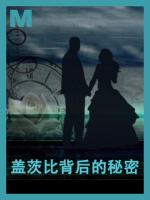盖茨比背后的秘密读后感
Published in 1925, The Great Gatsby became an immediate classic and propelled its young author to a fame he never again equalled. The novel captured the spirit of the "Jazz Age," a post-World War I era in upper-class America that Fitzgerald himself gave this name to, and the flamboyance of the author and his wife Zelda as they moved about Europe with other American expatriate writers (such as Ernest Hemingway). However, Gatsby expresses more than the exuberance of the times. It depicts the restlessness of what Gertrude Stein (another expatriate modernist writer) called a "lost generation." Recalling T. S. Eliot's landmark poem "The Wasteland" (1922), then, Gatsby also has its own "valley of ashes" or wasteland where men move about obscurely in the dust, and this imagery of decay, death, and corruption pervades the novel and "infects" the story and its hero too. Because the novel is not just about one man, James Gatz or Jay Gatsby, but about aspects of the human condition of an era, and themes that transcend time altogether, it is the stuff of myth. Gatsby's attempts to attain an ideal of himself and then to put this ideal to the service of another ideal, romantic love, are attempts to rise above corruption in all its forms. It is this quality in him that Nick Carraway, the novel's narrator, attempts to portray, and in so doing the novel, like its hero, attains a form of enduring greatness.



 京公网安备 11010802032529号
京公网安备 11010802032529号